Art Nouveau, a highly decorative international style of architecture and art, swept through Europe from 1890 until the beginning of World War I. This elaborate and ornamental style, enabled by new technologies, left behind some of the most stunning examples of Art Nouveau architecture in history. In this article, we will explore the world of Art Nouveau buildings and the architects who brought them to life.
What is Art Nouveau Architecture?
Art Nouveau emerged as a short-lived movement in the United States and Europe between 1890 and 1914. The style draws inspiration from nature, with organic flowing shapes like flowers, vines, and leaves. Initially an architectural movement, Art Nouveau quickly found its way into interior design, jewelry, glassware, and poster illustrations.
The Origins of Art Nouveau Architecture
Art Nouveau was a reactionary movement by artists and architects dissatisfied with the academic historicism of 19th-century architecture. They incorporated modern technologies and materials such as glass, ceramics, and iron into their works. The style is characterized by a sense of movement and dynamism imbued by the asymmetrical shapes of organic flowing lines.
The architects of Art Nouveau houses introduced exciting new concepts into architecture, thanks to the advances made during the Industrial Revolution.
These advancements allowed for the integration of sculptural elements, such as wrought iron and glass features, into the architecture of the buildings. Not restricted to the exteriors, these features extended to the interior decoration and furnishings as well.
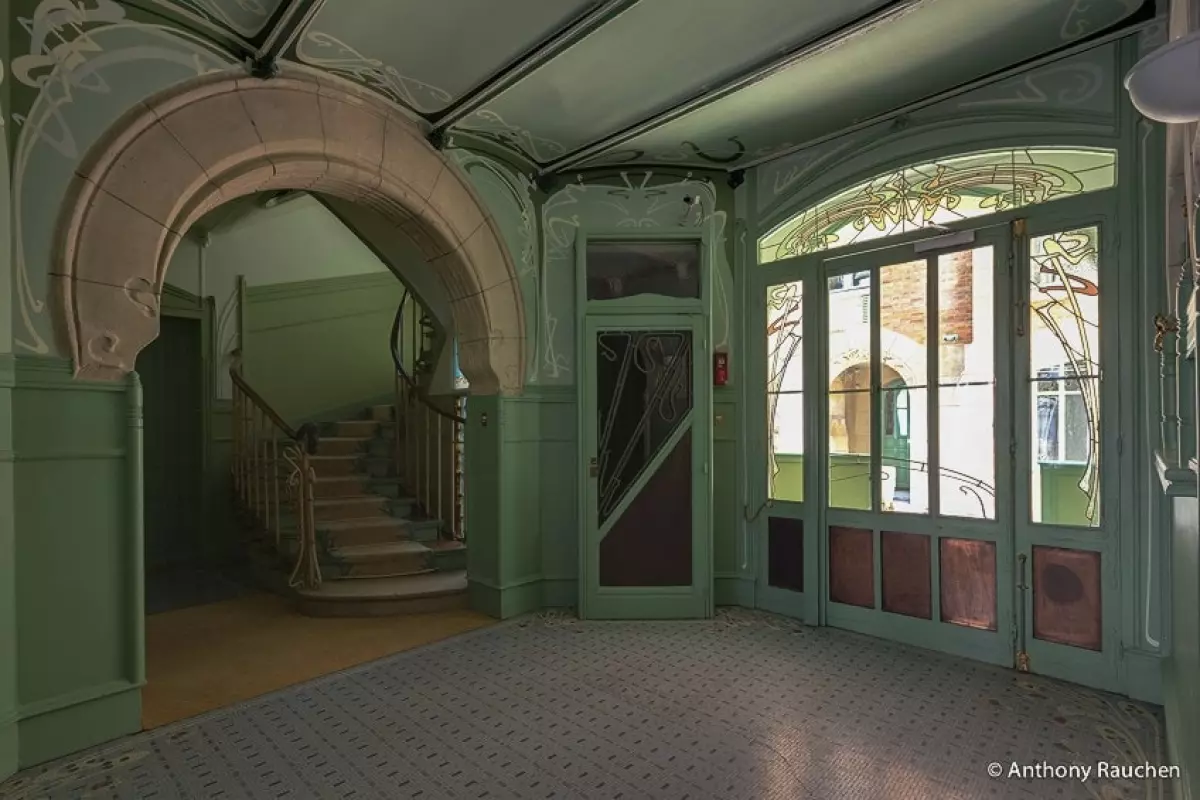
Art Nouveau aimed for an immersive experience, where everything from the wallpaper to the silverware reflected the style. The movement is known by different names, including Jugendstil, Stile Floreale, Sezionstill, and many others, depending on the country.
The term Art Nouveau originated in France, named after the Maison de l’Art Nouveau, a gallery that featured works with nature-inspired motifs.
The Architects of Art Nouveau Buildings
Although the Art Nouveau period was relatively short-lived, there are still many exquisite examples of Art Nouveau houses and buildings that exist today. Before we explore some of these examples, let's learn about some of the architects who created these magnificent structures.
Antoni Gaudí (1852 - 1926)
Antoni Gaudí, the driving force behind the Catalan Modernism movement, was born on June 25, 1852, in Catalonia, Spain. His unique architecture can be predominantly found in Barcelona, including his most famous work, the Sagrada Familia church.
Gaudí's designs were deeply inspired by his passions for religion, nature, and architecture.
Every detail of Gaudí's buildings underwent his creative scrutiny and control. He incorporated crafts such as wrought iron, stained glass, carpentry, and ceramics into his architectural designs. He even used broken ceramics, transforming discarded materials into stunning mosaic designs.
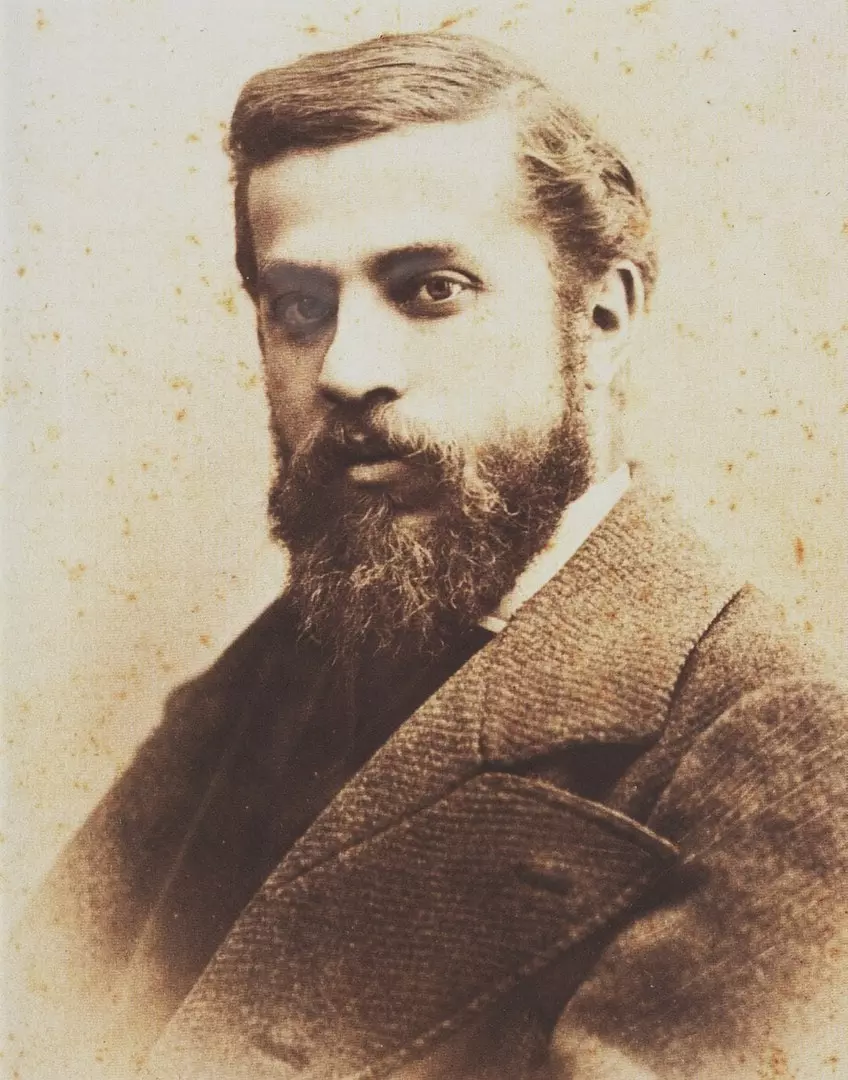
While Gaudí was part of the Modernista movement, he pushed its boundaries by incorporating organic shapes from the natural world into his work. Notably, he preferred creating his Art Nouveau houses as three-dimensional miniature models, allowing him to mold and refine the details throughout the creative process.
Paul Hankar (1859 - 1901)
Paul Hankar, an architect and furniture designer, was born on December 11, 1859, in Brussels, Belgium. He trained at the Académie Royale des Beaux-Arts in Brussels, where he met Victor Horta, another future Art Nouveau architect. Hankar developed his architectural skills while working as a sculptor of funerary monuments.
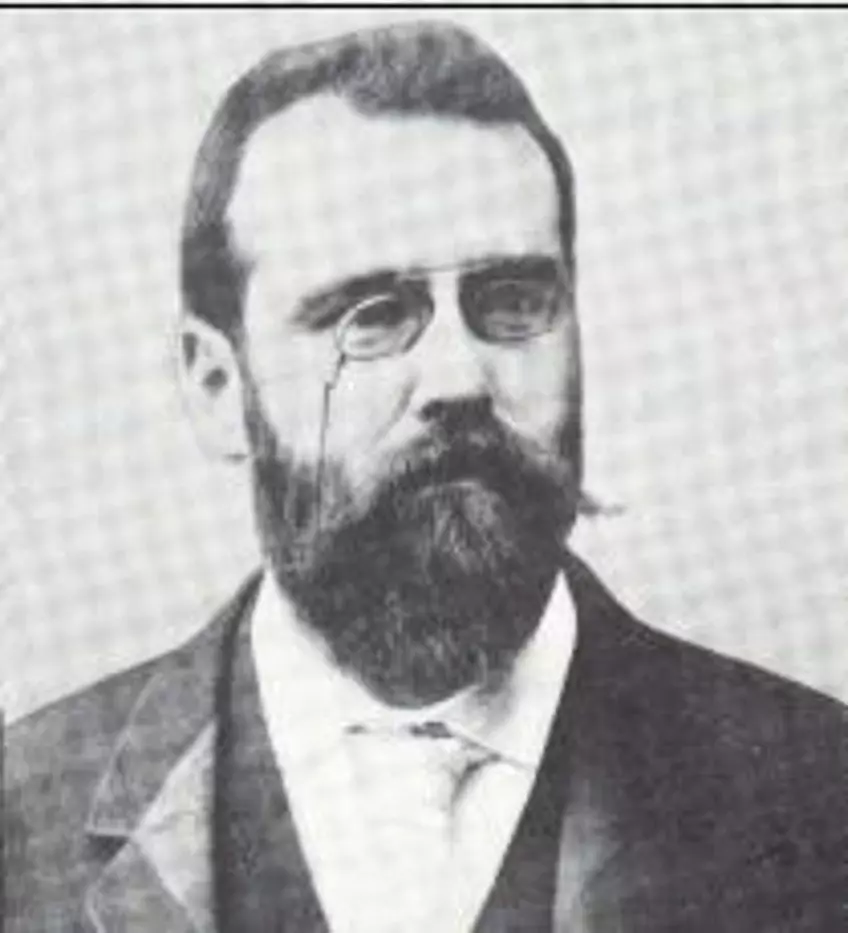
Hankar's most notable work is the Hankar House, built from 1893 to 1894, considered one of the first Art Nouveau buildings. Its composition beautifully combines Art Nouveau detailing with Renaissance revival materials and elements.
Hankar also conceptualized a "City of Artists," a cooperative community of studios and housing for artists in Westende, a seaside town. Although the project never materialized, it inspired the artist's colony in Darmstadt and left an impression on the artists of the Vienna Secession.
Victor Horta (1861 - 1947)
Victor Horta, a Belgian designer and architect born on January 6, 1861, in Ghent, is regarded as one of the fathers of Art Nouveau architecture. He created the first Art Nouveau houses, three of which have been designated as World Heritage Sites by UNESCO. Horta's signature curving floral and vegetative themes became defining elements of the style and influenced many other architects, such as Hector Guimard.
Horta's innovative use of iron, glass, and steel, along with his open floor plans, laid the groundwork for modern architecture.
One of Horta's breakthroughs was his design for Emile Tassel's home, completed in 1893. While the exterior adhered to a more traditional style, the interior showcased his unique and fresh take on Art Nouveau. The iron staircase railings, tile designs, and carpets all featured curving lines inspired by vines and leaves.

Later in his career, Horta moved away from Art Nouveau and introduced more formal and symmetrical designs, incorporating columns and classical touches. His spacious open plans, skylights, and steel frames brought more light into his buildings. King Albert I of Belgium bestowed upon him the title of Baron for his architectural achievements. UNESCO has recognized four of his buildings as World Heritage Sites.
Hector Guimard (1867 - 1942)
Hector Guimard, born in Lyon, France, in 1867, was a prominent French designer and architect of the Art Nouveau movement. He achieved early success with his design of the Castel Beranger in Paris, the first Art Nouveau building in the city. His style is characterized by iron canopies, glass, and the signature ornamental curves of Art Nouveau.
Guimard's work on the entrances to the Paris Metro stations showcases his distinctive style.
Guimard designed and built 140 entrances for the Paris Metro between 1890 and 1930, along with fifty other buildings and decorative furniture. While many of his works were demolished in the 1960s, there has been a recent revival of interest in his designs. The Museum of Modern Art's acquisition of some of his works rekindled academia's recognition of their importance to the history of architecture.
Charles Rennie Mackintosh (1868 - 1928)
Charles Rennie Mackintosh, born on June 7, 1868, in Glasgow, Scotland, was a Scottish designer and architect. His work shows similarities with the Symbolism movement and played a significant role in influencing design schools across Europe, including Secessionism and Art Nouveau.
Mackintosh is considered one of the principal members of British Art Nouveau.
Mackintosh's architectural journey began with his construction of the Glasgow Herald Building in 1899. He and his wife, Margaret MacDonald, were influential in the Glasgow art scene, known as "The Four." Mackintosh's architectural style drew inspiration from Japanese designs, incorporating simplicity, natural materials, and furniture that enhanced the quality of space.
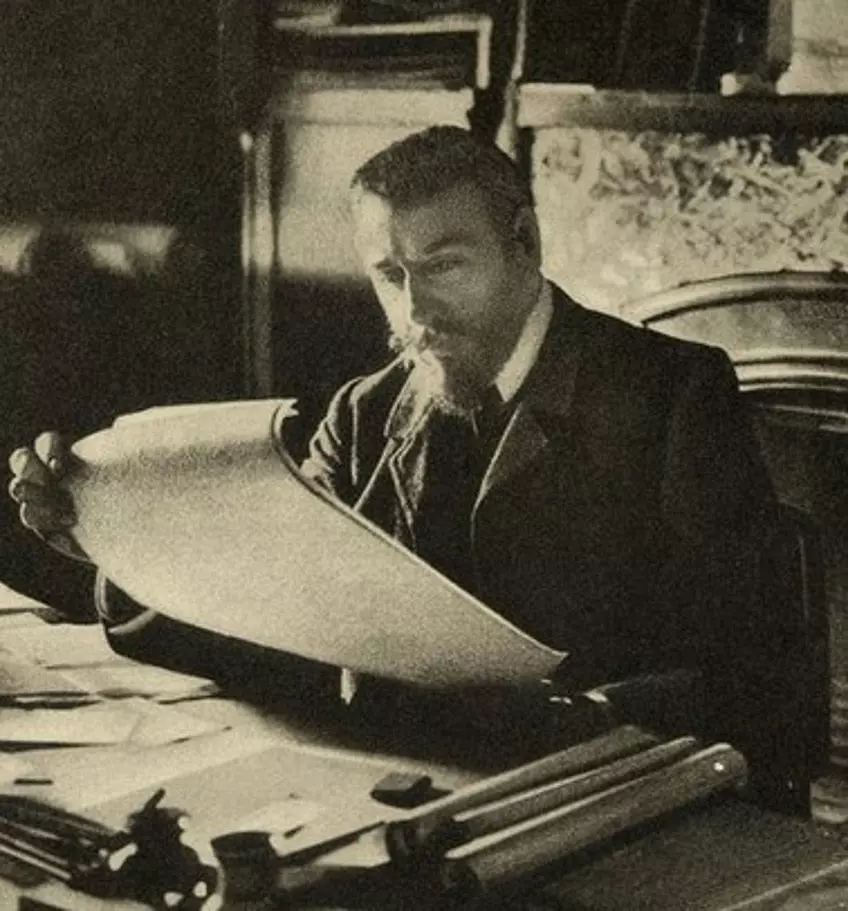
Mikhail Eisenstein (1867 - 1920)
Mikhail Eisenstein, an architect and civil engineer, was born in Ukraine on September 5, 1867. He worked in Riga, which was then part of the Russian Empire and known for its concentration of Art Nouveau buildings. Eisenstein, along with other architects, played a pivotal role in shaping Riga's architectural landscape.
Eisenstein designed and constructed many of the first Art Nouveau buildings in Riga, making it a hub for the style.
Not much is known about Eisenstein's early development, but his designs show similarities with the artists of the Vienna Secession. He drew inspiration from the works of architects like Josef Hoffmann and Otto Wagner. His legacy can also be seen in the early Art Nouveau buildings in Saint Petersburg.
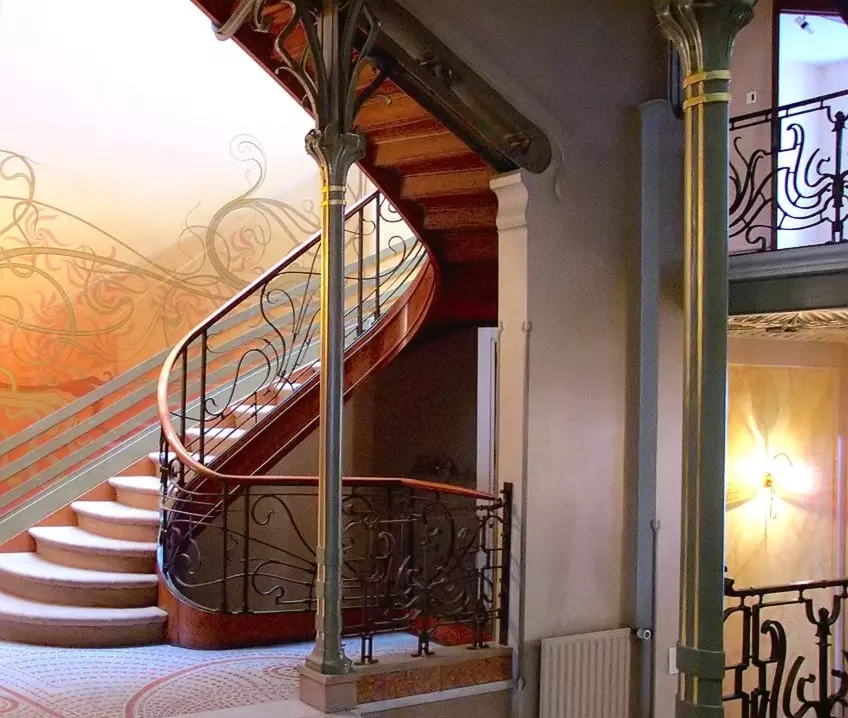
Examples of Art Nouveau Architecture
Art Nouveau was an internationally celebrated style, with architects worldwide creating magnificent Art Nouveau buildings. Many examples still stand today, showcasing the unique characteristics of the style. Let's explore a few famous Art Nouveau buildings and houses.
La Sagrada Familia, Barcelona
Location: Barcelona, Spain Date Built: 1882-2010 Architect: Antoni Gaudí Function: Basilica
The La Sagrada Familia church in Barcelona, designed in the Catalan Modernist style by Antoni Gaudí, represents a unique example of Art Nouveau architecture. Although it also shows influences from other styles, the church's spires, with intricate details, were intended to represent religious figures.

Casa Battlò, Barcelona
Location: Barcelona, Spain Date Built: 1877-1912 Architect: Antoni Gaudí Function: House
Casa Battlò, another masterpiece by Antoni Gaudí, is an expression of Art Nouveau with elements of expressionism. The building's massive windows, adorned with brass embellishments, must have been truly breathtaking when it was first constructed.

Casa Amatller, Barcelona
Location: Barcelona, Spain Date Built: 1900 Architect: Josep Puig i Cadafalch Function: House
Casa Amatller showcases Art Nouveau characteristics combined with Germanic elements and Neo-Gothicism. The facade's prominent cornice and flush patterns create a visually striking appearance. Originally designed by Josep Puig i Cadafalch, the building was later redesigned by Antoni Robert for Spanish chocolatier Antoni Amatller.
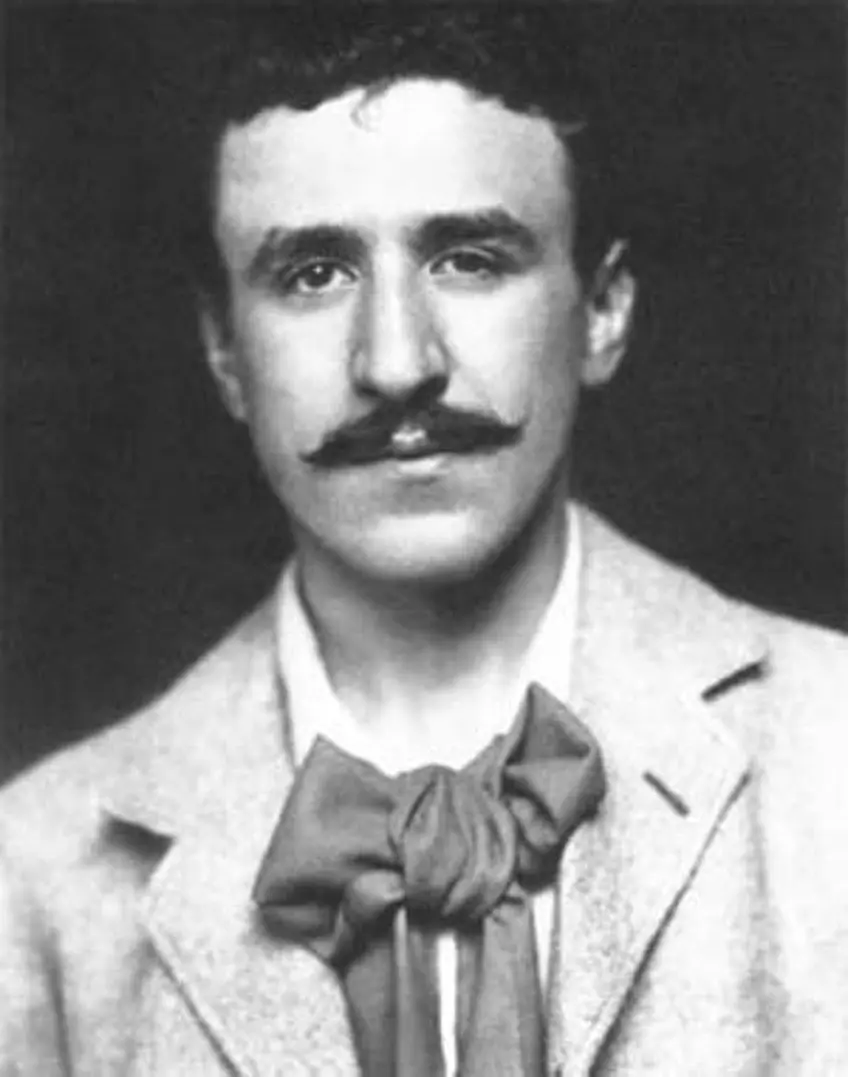
Hotel Tassel, Brussels
Location: Brussels, Belgium Date Built: 1892-1894 Architect: Victor Horta Function: Hotel
Hotel Tassel, designed by Victor Horta, is widely considered the first Art Nouveau building in the world. The entire interior embodies the Art Nouveau style with thin columns that transform into organic creepers and vegetative tendrils. The use of glass and wrought iron allows natural light to illuminate the intricately designed spaces.

Museum of Applied Arts, Budapest
Location: Budapest, Hungary Date Built: 1893-1896 Architect: Ödön Lechner Function: Museum
The Museum of Applied Arts in Budapest features a majestic facade influenced by oriental designs and Hungarian elements, resulting in a unique Hungarian Art Nouveau architecture. The towering building incorporates a colorful mix of styles, with an atrium showcasing Art Nouveau curves and eastern-style railings.

Secession Building, Vienna
Location: Vienna, Austria Date Built: 1898 Architect: Joseph Maria Olbrich Function: Convention Center
The Secession Building in Vienna, designed by Joseph Maria Olbrich, is a testament to Art Nouveau's departure from traditional architectural styles. The building's exterior, with its "Golden Cabbage" dome covered in gold leaf, embodies the new form of Art Nouveau. The interior features simplicity, minimalism, and an open layout, creating a unique convention center.

Art Nouveau architecture may have had a short lifespan, but its influence lives on through the stunning artworks left behind. The movement's devotion to capturing the shapes and lines found in nature created a distinct architectural style that continues to inspire and amaze.
Frequently Asked Questions
Where Did Art Nouveau Architecture Come From?
Art Nouveau spread across Europe and the United States, with each region infusing its unique characteristics into the style. The term originated in France, named after the Maison de l'Art Nouveau gallery. However, the architectural elements first developed in places like Brussels and Barcelona.
What Are the Characteristics of Art Nouveau Architecture?
Art Nouveau architecture reflects the shapes and forms found in nature. It embraces floral motifs, asymmetry, and organic flowing lines. Materials such as glass, wrought iron, and ceramics are commonly used to add intricate details and enhance the overall aesthetic.
















![7 Best Sites for Advertising Rental Property Listings [Free + Paid]](https://saigonintela.vn/uploads/images/blog/admin/2024/02/15/7-best-sites-for-advertising-rental-property-listings-free-paid-thumb-1707966641.webp)
